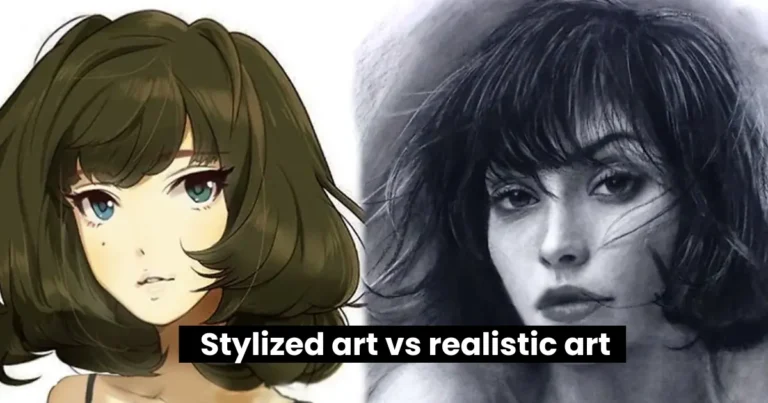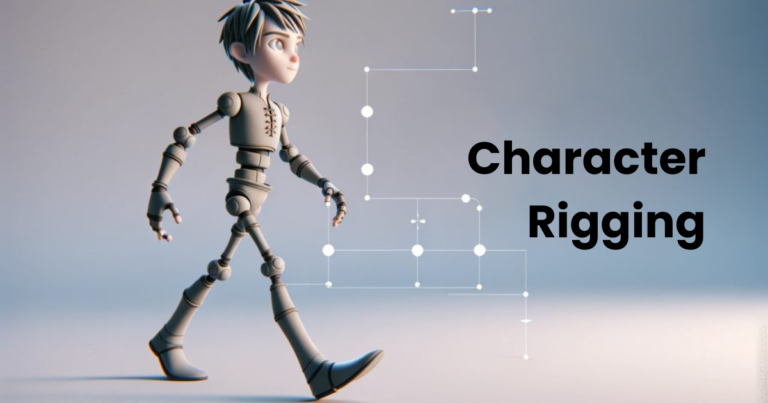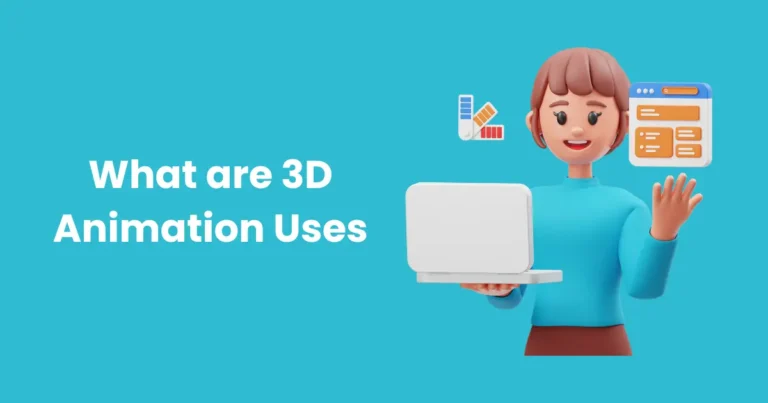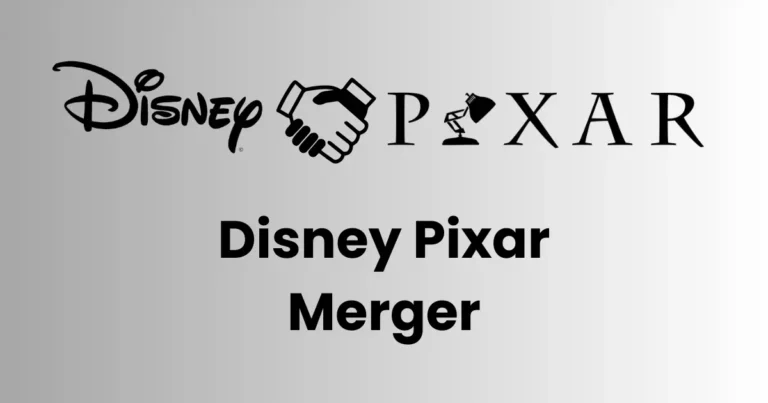What is War Animation? | best guide for war animation in 2024
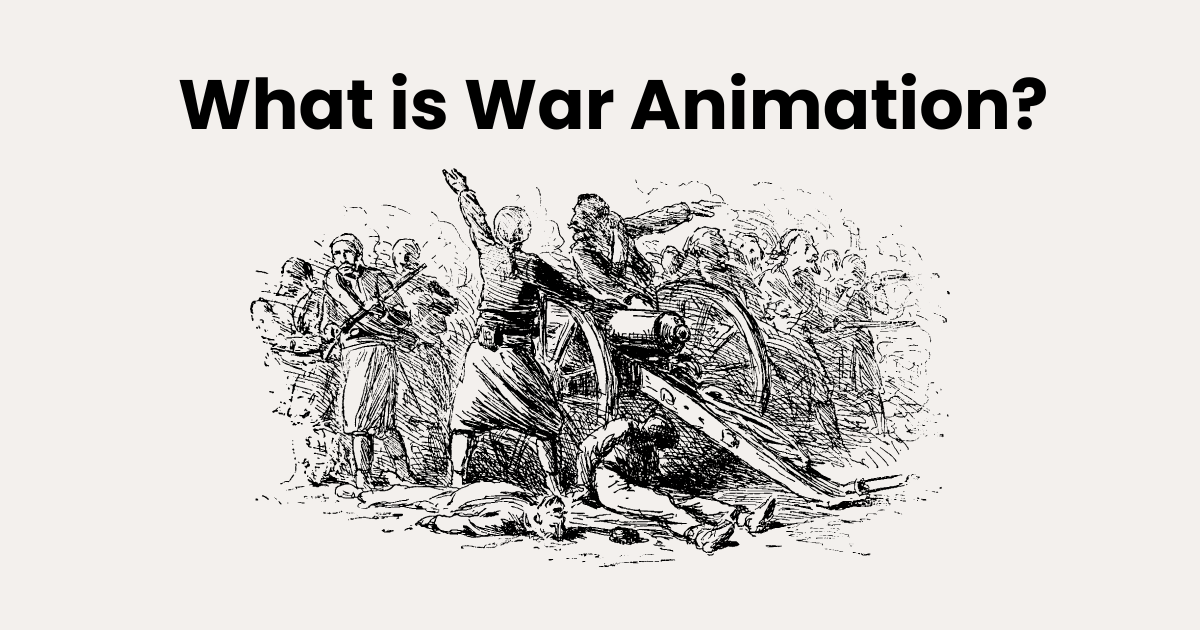
Contents
- 1 A Brief History of War Animations
- 2 Types of War Animation
- 3 Techniques Used in War Animation
- 3.1 1. Traditional 2D Animation
- 3.2 2. 3D Animation and CGI (Computer-Generated Imagery)
- 3.3 3. Motion Capture (MoCap)
- 3.4 4. Rotoscoping
- 3.5 5. Particle Effects
- 3.6 6. Dynamic Camera Techniques
- 3.7 7. Cel Shading
- 3.8 8. Simulation and Physics Engines
- 3.9 10. Stylized Animation Techniques
- 3.10 Significance of Animation Techniques in War Narratives
- 4 How War Animation Captures Realism and Emotion
- 5 War Animation in Film and Television
- 6 War Animation and Video Games
- 6.1 1. The Importance of War Animation in Video Games
- 6.2 2. Popular War Video Games Featuring Animation
- 6.3 3. Techniques Used in War Animation for Games
- 6.4 4. War Animation Styles in Games
- 6.5 5. Animation in Strategic War Games
- 6.6 6. Challenges in War Animation for Video Games
- 6.7 The Future of War Animation in Video Games
- 7 Tools and Software Used in War Animation
- 8 The Challenges of Creating War Animation
War animation is a fascinating genre within the animation industry that portrays the intense, strategic, and emotional aspects of warfare. Whether it’s recreating historical battles, imagining futuristic wars, or delving into epic fantasy conflicts, war animations use visual storytelling to immerse viewers in the drama and complexity of war. This genre captivates audiences by combining art and technology to depict not only large-scale battles but also the human experiences and emotions tied to conflict.
The influence of war animations extend beyond entertainment. It often serves as a medium to explore themes such as heroism, sacrifice, and the consequences of violence. From animated films and television shows to video games, war animation has carved a niche for itself by offering a unique perspective on warfare, blending creativity with realism.
In this article, we will explore the history, types, techniques, and significance of war animation, highlighting its role in visual storytelling and its impact on audiences worldwide. Whether you’re a fan of action-packed sequences or thought-provoking narratives, war animation offers something for everyone, making it a cornerstone of modern entertainment.
A Brief History of War Animations
The history of war animation is a rich and evolving narrative that reflects technological advancements, changing storytelling techniques, and shifting cultural perspectives. From its origins as a propaganda tool to its modern role as a medium for artistic expression, war animatiosn have continuously adapted to meet the needs of its audience.

The Early Days: War Animation as Propaganda
The roots of war animation can be traced back to the early 20th century, particularly during World War I and World War II. Governments and filmmakers recognized the power of animation to convey messages effectively. Studios like Disney and Warner Bros. produced short films and animated cartoons to boost morale, encourage enlistment, and demonize opposing forces.
Notable examples include:
- “Der Fuehrer’s Face” (1943): A satirical Disney short featuring Donald Duck, created to highlight the absurdity of Nazi Germany.
- “Private Snafu” Series: A series of animated shorts for American soldiers, combining humor with educational content about military protocols.
These early animations were instrumental in shaping public perception during wartime, showcasing the potential of the medium to communicate complex messages in a simple, engaging format.
Post-War Evolution: From Propaganda to Storytelling
After World War II, the focus of war animation shifted from propaganda to more nuanced storytelling. The horrors of war inspired animators to explore its psychological and emotional impacts. This period saw the rise of artistic and thought-provoking animations that examined the human cost of conflict.
One of the most iconic examples is “Grave of the Fireflies” (1988), a Japanese animated film that portrays the struggles of two siblings during World War II. The film highlights the devastating effects of war on civilians, making it a landmark in the evolution of war animation.
Modern War Animation: A Fusion of Realism and Creativity
In recent decades, war animation has embraced new technologies, such as CGI and motion capture, to create more realistic and immersive experiences. Films, TV shows, and video games have expanded the scope of war animation, blending historical accuracy with imaginative storytelling.
Key developments include:
- The Rise of Video Games: Titles like Call of Duty and Medal of Honor have incorporated detailed war animations to offer players realistic combat scenarios.
- Fantasy and Sci-Fi Influences: Animated series like Attack on Titan and Star Wars: The Clone Wars have used war themes to explore broader narratives of power, survival, and morality.
Cultural Impact of War Animation
Throughout its history, war animation has served as both entertainment and a reflection of society’s understanding of conflict. By combining visual art with powerful storytelling, it has become a medium that educates, entertains, and provokes thought about the nature of war and its consequences.
From its early use in propaganda to its modern role in pushing creative boundaries, the evolution of war animations underscore its enduring relevance as a tool for storytelling and cultural commentary. This journey through time highlights the versatility of animation in capturing the complexities of warfare, ensuring its place as a vital genre in the world of visual storytelling.
Types of War Animation
The genre of war animation spans a wide spectrum, showcasing different styles, narratives, and settings to explore the concept of warfare. Whether rooted in historical accuracy, futuristic sci-fi, or fantastical battles, war animation captivates audiences with its diversity. Below, we explore the major types of war animations that define this genre.

1. Historical War Animation
This type of war animation focuses on recreating real-world conflicts from history. From ancient battles to modern warfare, it emphasizes accuracy and detail to portray the realities of war.
- Key Features: Authentic depictions of uniforms, weapons, and strategies; grounded storytelling.
- Examples:
- Giovanni’s Island (2014): A Japanese animated film about the post-World War II Soviet occupation of Japan.
- The Wind Rises (2013): While not purely war-focused, this Studio Ghibli film explores themes of war through the perspective of an aircraft designer.
2. Military Training and Propaganda Animation
Historically significant during wartime, these animations were created to educate, inform, or influence. Governments and military organizations used animated shorts to train soldiers or convey wartime messages to the public.
- Key Features: Simplistic animation, focused on clear messaging; often morale-boosting or instructional.
- Examples:
- The Private Snafu series: Created for U.S. soldiers during World War II.
- Propaganda cartoons from studios like Disney, such as Victory Through Air Power (1943).
3. Fantasy War Animation
Fantasy settings in war animation allow creators to explore the themes of conflict without being constrained by real-world history. These stories often include mythical creatures, supernatural powers, and epic battles.
- Key Features: Inventive settings, magical elements, and dramatic narratives.
- Examples:
- Attack on Titan: Explores humanity’s battle for survival against giant Titans.
- The Lord of the Rings (animated version, 1978): An epic tale of good versus evil set in a mythical world.
4. Science Fiction War Animation
Incorporating futuristic technologies and intergalactic conflicts, sci-fi war animation expands the battlefield to space and beyond. These stories often explore philosophical and ethical dilemmas of war in advanced civilizations.
- Key Features: Advanced technology, futuristic settings, and speculative warfare.
- Examples:
- Star Wars: The Clone Wars: Chronicles the epic galactic conflict between the Republic and Separatists.
- Mobile Suit Gundam: A series centered on giant mech battles in space.
5. Post-Apocalyptic War Animation
Set in worlds ravaged by war or environmental collapse, this type of war animation delves into survival and rebuilding in the aftermath of catastrophic conflicts.
- Key Features: Dystopian settings, themes of survival and renewal, and bleak yet powerful storytelling.
- Examples:
- Grave of the Fireflies: Examines the effects of war on civilians in post-war Japan.
- Fist of the North Star: Set in a war-torn, post-apocalyptic future.
6. Video Game War Animation
With the rise of gaming, war animation has found a significant platform in video games, blending storytelling with interactivity. These animations bring battles to life with cutting-edge graphics and immersive narratives.
- Key Features: Real-time combat sequences, detailed animations, and user-controlled storytelling.
- Examples:
- Call of Duty series: Focuses on realistic depictions of modern and historical warfare.
- Warcraft series: Combines fantasy war elements with strategic gameplay.
7. Hybrid Animation
Some productions blend multiple genres, incorporating elements of historical, fantasy, and sci-fi to craft unique war narratives. These animations often experiment with style and tone to deliver innovative storytelling.
- Key Features: Versatile storytelling, mixed settings, and genre-bending narratives.
- Examples:
- The Legend of Korra: Merges fantasy and industrial-era elements to explore conflicts in a rich, animated world.
- Fullmetal Alchemist: Explores war themes within a steampunk-inspired setting.
The Significance of Different Types of War Animation
Each type of war animation offers a unique perspective on the complexities of conflict. Whether providing historical insights, exploring human resilience, or crafting imaginative battlefields, these animations highlight the versatility and depth of the genre. The variety ensures that war animation continues to evolve and resonate with audiences worldwide.
Techniques Used in War Animation
Creating impactful war animation requires a combination of artistic vision and technical expertise. Animators employ a range of techniques to depict realistic combat, intricate battlefields, and emotional narratives. These techniques blend traditional animation principles with modern technologies to bring war stories to life. Here’s a detailed look at the primary techniques used in war animation.

1. Traditional 2D Animation
Traditional 2D animation remains a cornerstone of war animation, especially for storytelling with a hand-drawn aesthetic. This technique involves creating frame-by-frame sequences to depict movement and action.
- Features:
- Hand-drawn or digitally drawn frames.
- Emphasis on character expressions and dynamic action scenes.
- Examples:
- Grave of the Fireflies: Uses 2D animation to portray emotional wartime struggles.
- Propaganda cartoons of the 20th century, like Disney’s wartime shorts.
2. 3D Animation and CGI (Computer-Generated Imagery)
Modern war animation often relies on 3D animation and CGI to deliver realistic environments, complex battle scenes, and lifelike characters.
- Features:
- High-resolution textures and realistic physics.
- Flexibility to simulate large-scale battles and destruction.
- Examples:
- Star Wars: The Clone Wars: Uses 3D animation to depict intense intergalactic battles.
- Video games like Call of Duty, which rely heavily on CGI for war sequences.
3. Motion Capture (MoCap)
Motion capture is a popular technique in war animation that captures the movements of real actors and translates them into animated characters. This enhances realism in character movements, especially in combat scenes.
- Features:
- Naturalistic body movements and facial expressions.
- Ideal for large-scale action sequences and character-driven storytelling.
- Examples:
- Love, Death + Robots: Combines motion capture with CGI for immersive storytelling.
- High-budget war video games like Medal of Honor.
4. Rotoscoping
Rotoscoping involves tracing over live-action footage to create realistic animations. It is often used to add a sense of realism and fluidity to character movements in war sequences.
- Features:
- High accuracy in movement.
- Often blended with traditional or digital animation styles.
- Examples:
- Waltz with Bashir: A war documentary that combines rotoscoping with animation to depict real events.
5. Particle Effects
Particle effects are used to simulate environmental elements such as explosions, smoke, fire, and debris in war animation, adding visual depth to battle scenes.
- Features:
- Realistic effects for destruction and combat intensity.
- Enhances the overall immersive experience.
- Examples:
- War scenes in Attack on Titan, featuring dramatic explosions and atmospheric smoke.
6. Dynamic Camera Techniques
Dynamic camera work in war animation replicates the fast-paced, chaotic nature of battle. Animators use virtual cameras to simulate perspectives such as aerial views, first-person shots, and sweeping battlefield panoramas.
- Features:
- Mimics cinematic techniques like slow motion, zooms, and tracking shots.
- Adds tension and drama to war sequences.
- Examples:
- Star Wars: The Clone Wars frequently uses dynamic camera angles during space battles.
7. Cel Shading
Cel shading is a stylistic technique that gives 3D models the appearance of 2D art. It’s often used in war animation to combine traditional and modern aesthetics.
- Features:
- Stylized visuals with bold outlines and flat colors.
- Ideal for hybrid animation styles.
- Examples:
- Video games like Fire Emblem and animated series like The Legend of Korra.
8. Simulation and Physics Engines
To create believable war animations, simulation tools and physics engines are used for realistic rendering of destruction, collisions, and natural phenomena.
- Features:
- Accurate physics for explosions, falling debris, and environmental effects.
- Real-time rendering for interactive animation (e.g., in video games).
- Examples:
- Call of Duty uses physics engines to simulate real-world combat scenarios.
9. Blend of Practical and Digital Effects
In some cases, animators combine practical effects (e.g., miniatures or stop-motion) with digital enhancements to create unique war animation styles.
- Features:
- Combines tactile textures with CGI for a layered visual effect.
- Adds a handcrafted feel to animated sequences.
- Examples:
- Stop-motion war animations like The Sandcastle (1977).
10. Stylized Animation Techniques
Some war animations intentionally adopt a stylized approach, focusing on exaggerated movements, vibrant colors, or abstract visuals to emphasize emotional or thematic elements.
- Features:
- Non-realistic, artistic interpretations of war.
- Focus on storytelling rather than realism.
- Examples:
- Attack on Titan: Combines stylized action with dramatic visuals.
Significance of Animation Techniques in War Narratives
The techniques used in war animation not only enhance the visual appeal but also deepen audience engagement. By combining traditional methods with cutting-edge technologies, animators can convey the chaos of battle, the complexity of strategy, and the human side of warfare. Whether aiming for historical accuracy or creative expression, these techniques ensure that war animation continues to captivate and inspire audiences worldwide.
How War Animation Captures Realism and Emotion
The ability of war animation to depict both realism and emotion lies at the heart of its storytelling power. Animators employ a variety of techniques, artistic choices, and narrative tools to create a compelling and immersive experience that resonates with audiences. By blending visual fidelity with human stories, war animation bridges the gap between action and emotion.

1. Realistic Visuals Through Advanced Technology
Modern war animation uses sophisticated tools and techniques to create lifelike visuals that enhance realism.
- Details in Characters and Environments: High-resolution textures, intricate character designs, and accurate depictions of battlefields help establish an authentic war atmosphere.
- Physics and Particle Effects: Animators simulate explosions, smoke, and debris using particle effects to portray the chaos of war.
- Examples:
- Saving Private Ryan-inspired sequences in war video games and animated series replicate the tension and destruction of combat.
2. Depicting Human Stories Amid Chaos
While battle scenes are central to war animation, emotional narratives add depth to the experience.
- Character-Driven Stories: War animations often focus on the personal journeys of soldiers, civilians, or survivors.
- Themes of Sacrifice and Resilience: By showing the human cost of war, animators elicit empathy and reflection from the audience.
- Examples:
- Grave of the Fireflies: Balances wartime destruction with an emotional portrayal of two siblings’ struggle for survival.
3. Authentic Sound Design
Sound plays a crucial role in immersing the audience in the world of war animation.
- Realistic Audio Effects: The sounds of gunfire, explosions, and marching soldiers create a sense of urgency and danger.
- Music and Silence: Emotional scenes often use poignant music or strategic silence to amplify impact.
- Examples:
- The haunting score of Waltz with Bashir complements its powerful war imagery.
4. Realistic Action and Movement
Realism in war animation extends to character movements and battle choreography.
- Motion Capture: Actors’ movements are recorded and integrated into animation, ensuring lifelike combat sequences.
- Strategic Use of Slow Motion: Highlights intense moments, such as a soldier dodging an explosion or a pivotal emotional interaction.
- Examples:
- Love, Death + Robots: Combines motion capture with CGI to deliver visceral battle scenes.
5. Emotional Impact Through Artistic Style
The art style chosen for war animation can significantly influence how audiences connect with the narrative.
- Realistic Art Styles: Ground audiences in the harsh realities of war.
- Stylized or Abstract Approaches: Focus on emotional intensity rather than physical accuracy, making the story more symbolic.
- Examples:
- Attack on Titan: Uses a stylized approach to highlight both the epic scale of battle and the emotional weight of its characters’ struggles.
War Animation in Film and Television
War animation has carved a unique space in both film and television, offering audiences a visual and emotional journey into the complexities of war. Unlike live-action depictions, animated war stories leverage artistic freedom to explore imaginative narratives, symbolism, and exaggerated visual styles while still conveying the raw intensity of battle and the personal toll of conflict.

1. The Role of War Animation in Storytelling
Animation provides a versatile medium to present war narratives with unparalleled creativity and depth.
- Artistic Expression: Animators can use surreal imagery or symbolic elements to represent emotions, ideologies, or historical events.
- Accessibility: Animation can make heavy war themes more accessible to younger audiences while still appealing to adults.
- Examples:
- Grave of the Fireflies: A poignant animation that delves into the lives of siblings during WWII, portraying the human cost of war.
2. Iconic War Animations in Film
Several animated films have become iconic for their portrayal of war, blending powerful storytelling with stunning visuals.
- Feature Films:
- The Wind Rises (Studio Ghibli): Explores the personal and professional life of a Japanese aircraft designer during WWII.
- Waltz with Bashir (Ari Folman): A surreal animated documentary about the 1982 Lebanon War, focusing on memory and trauma.
- Barefoot Gen (Keiji Nakazawa): Offers a haunting depiction of Hiroshima during and after the atomic bomb.
- Short Films: Many independent animators use short formats to depict untold or niche war stories.
3. War Animation in Television Series
Animated TV series often use episodic storytelling to explore war’s complexities over time.
- Popular Examples:
- Attack on Titan: Blends fantasy and warfare, focusing on survival, political intrigue, and the devastating cost of conflict.
- The Legend of Korra: Features themes of revolution and military conflict in a richly developed fictional world.
- Avatar: The Last Airbender: Though aimed at younger audiences, it explores war, colonialism, and resistance with emotional depth.
- Anthology Series:
- Love, Death + Robots: Includes episodes like “The Secret War,” which combines war and supernatural elements.
4. The Global Appeal of War Animation
War animation resonates globally due to its ability to explore universal themes such as sacrifice, resilience, and humanity.
- Cultural Perspectives: Animators from different countries bring unique viewpoints, showcasing diverse historical and cultural conflicts.
- Japanese War Animation: Often emphasizes the civilian perspective, as seen in Grave of the Fireflies.
- Western Productions: Highlight soldier experiences and technological warfare, as seen in The Liberator on Netflix.
- International Collaborations: Projects like Persepolis explore war and political upheaval through a cross-cultural lens.
5. Advantages of Animation Over Live-Action
This type of animation has distinct advantages that set it apart from live-action representations.
- Freedom of Creativity: Animators can depict surreal, symbolic, or large-scale war scenes without the constraints of physical sets or actors.
- Easier Depiction of Historical or Futuristic Wars: Animation can recreate any era or speculate about wars in the distant future.
- Reduced Production Risks: Avoids the dangers and costs associated with live-action stunts and pyrotechnics.
War Animation and Video Games
War animation plays a vital role in the gaming industry, where realism, strategy, and storytelling are combined to create immersive and impactful experiences. Video games focused on war often use advanced animation techniques to depict battles, characters, and environments, delivering narratives that engage players emotionally and intellectually.

1. The Importance of War Animation in Video Games
War animation is essential for creating believable and engaging war-themed games. It enhances:
- Realism: Precise animations make battles, weapons, and character movements feel authentic.
- Immersion: Dynamic visuals transport players into historical or fictional warzones.
- Narrative Depth: Animated cutscenes and sequences convey the emotional toll and strategic complexities of war.
2. Popular War Video Games Featuring Animation
Several iconic war games demonstrate the significance of animation in creating memorable experiences:
- Call of Duty Series: Known for its hyper-realistic war animation, from character movements to explosive battle scenes.
- Medal of Honor Series: Offers a historically accurate portrayal of WWII, using animation to recreate the period’s weapons and uniforms.
- Battlefield Series: Blends large-scale multiplayer battles with highly detailed war animation for vehicles, landscapes, and destructible environments.
- World of Tanks: Focuses on animated tank battles, showcasing precise mechanics and fluid motion.
- War Thunder: Combines air, land, and sea warfare, featuring seamless transitions between animated combat scenarios.
3. Techniques Used in War Animation for Games
War animation in games requires advanced techniques to ensure smooth gameplay and cinematic appeal:
- Motion Capture: Captures realistic human movements for soldiers and civilians in war settings.
- Physics Engines: Simulate real-world effects such as explosions, vehicle dynamics, and collapsing structures.
- Procedural Animation: Allows for dynamic character actions, like reacting to gunfire or injuries, based on in-game conditions.
- Cutscene Animation: Cinematic sequences use animation to advance the story and connect players emotionally to the characters.
4. War Animation Styles in Games
Different styles of war animation cater to a variety of audiences and gameplay experiences:
- Realistic Animation: Used in games like Call of Duty and Battlefield, where every detail, from weapon handling to character gestures, mimics real-life combat.
- Stylized Animation: Games like Advance Wars and Brothers in Arms use exaggerated visuals for a more accessible or artistic approach.
- Futuristic War Animation: Titles like Halo and Gears of War explore sci-fi settings with animated futuristic weaponry and alien battles.
5. Animation in Strategic War Games
Strategic war games rely on animation to represent tactical decisions and large-scale battles effectively:
- Unit Movement: Smooth animations for troops, vehicles, and aircraft enhance realism.
- Battle Simulations: Animated scenarios showcase the outcomes of player strategies.
- Resource Management: Visual feedback through animations helps players track progress in managing resources and building armies.
- Examples: Company of Heroes, Total War Series.
6. Challenges in War Animation for Video Games
Creating animations for war-themed games involves several technical and artistic challenges:
- Balancing Realism and Gameplay: Animations must look realistic while remaining responsive and fluid for players.
- Cultural Sensitivity: Representing historical wars accurately while respecting different perspectives.
- Resource-Intensive Production: High-quality animations require significant time and resources, particularly for large-scale battles and destructible environments.
The Future of War Animation in Video Games
The future of war animation in gaming looks promising with technological advancements:
- Virtual Reality (VR): Offers fully immersive war simulations with 360-degree animated environments.
- Artificial Intelligence (AI): Enhances NPC animations, making enemy and ally actions more lifelike and unpredictable.
- Real-Time Ray Tracing: Improves lighting and shadow effects, elevating the realism of animated war environments.
- Interactive Storytelling: Dynamic animations will allow players to influence war narratives more deeply.
Tools and Software Used in War Animation
Creating war animation requires a mix of powerful tools and software that enable animators to produce realistic, detailed, and engaging content. From modeling and texturing to animation and rendering, these tools help bring war-themed visuals to life. Below is an overview of the essential tools and software used in war animation.
1. 3D Modeling and Texturing Software
Modeling and texturing are foundational for creating realistic war assets such as weapons, vehicles, and environments.
- Maya: Widely used for 3D modeling and animation, Maya excels in creating detailed assets and smooth animations.
- Blender: A free, open-source software used for 3D modeling, rigging, and texturing, ideal for budget-conscious studios.
- ZBrush: Preferred for sculpting detailed character and prop models, especially soldiers and war machinery.
- Substance Painter: Adds lifelike textures and materials to models, such as worn armor, mud-stained vehicles, and damaged buildings.
2. Animation Software
Animation software helps animators create dynamic movements, whether for characters, battles, or vehicles.
- Autodesk Maya: Known for its robust animation tools, it’s a go-to for animating combat scenes, explosions, and character actions.
- MotionBuilder: Used for refining motion-captured animations, ensuring lifelike movements in soldiers and combat sequences.
- Blender: Supports both 2D and 3D animation workflows, making it versatile for creating war scenes and effects.
- Cinema 4D: Often used for cinematic sequences in war animations, offering tools for dynamic effects like debris and explosions.
3. Rendering Engines
Rendering engines generate the final visuals, including lighting, shadows, and textures, which are crucial for war animation.
- Unreal Engine: Popular for its real-time rendering capabilities, it’s used in war animations for games and interactive experiences.
- Unity: Offers flexible rendering options and is often used for war animations in mobile and indie games.
- Arnold: A high-quality rendering engine ideal for photorealistic war scenes in movies and commercials.
- OctaneRender: Known for its speed and realism, Octane is used to render complex war scenes efficiently.
4. Visual Effects (VFX) Tools
VFX tools enhance war animations with realistic effects such as explosions, fire, smoke, and debris.
- Houdini: The industry standard for creating dynamic effects like bomb blasts, shattering buildings, and flying debris.
- Adobe After Effects: Used for post-production work, including compositing, color correction, and adding visual effects.
- Nuke: A powerful compositing tool for integrating 3D elements with live-action footage, commonly used in war animations for films.
5. Motion Capture Technology
Motion capture (mocap) is essential for creating realistic character movements in war animations.
- Vicon: A leading mocap system that captures intricate movements for soldiers, ensuring lifelike combat sequences.
- OptiTrack: Used in gaming and film industries to record precise movements for war animations.
- Rokoko Smartsuit Pro: An affordable, wearable motion capture suit suitable for smaller studios.
6. Sound Design and Integration Tools
Sound is integral to war animation, adding realism to explosions, gunfire, and character dialogues.
- Pro Tools: Professional audio editing software used to integrate sound effects and music into animations.
- Audacity: A free tool for recording and editing sound, often used by indie animators.
- FMOD Studio: An interactive audio tool that syncs sound effects with animated sequences, commonly used in war games.
The Challenges of Creating War Animation
War animation is a demanding genre that requires meticulous attention to detail and a deep understanding of history, emotion, and technical aspects. Animators face numerous challenges while striving to deliver realistic and emotionally impactful depictions of war. Below are some of the key challenges of creating war animation:
1. Balancing Realism and Creativity
War animations must strike a balance between authenticity and artistic expression.
- Authenticity: Accurately depicting weapons, uniforms, and battle environments requires extensive research.
- Creative Freedom: Animators often need to enhance visuals or dramatize scenes for cinematic impact without compromising realism.
Achieving this balance can be difficult, especially when the audience expects both historical accuracy and engaging storytelling.
2. Portraying the Emotional Weight of War
War is an emotionally charged subject, and animators must capture its gravity without trivializing it.
- Humanizing Characters: Animators must create relatable and realistic characters that convey the emotional struggles of war.
- Depicting Loss and Chaos: Representing the devastation of war through animation requires subtle yet powerful storytelling techniques.
- Avoiding Sensationalism: Animators must avoid over-glorifying violence, ensuring that the animation respects the real-life consequences of war.
3. Rendering Realistic Battle Environments
War animation demands highly detailed environments that accurately represent battlefields, cities, and rural landscapes.
- Environmental Complexity: Animators must simulate destructed buildings, rugged terrains, and dynamic weather conditions.
- Crowd Simulation: Creating realistic armies and large-scale battle scenes often involves complex crowd-simulation techniques.
- Lighting and Atmosphere: Achieving realistic lighting, explosions, and smoke effects adds another layer of difficulty.
4. Technical Challenges
War animations are resource-intensive, requiring advanced tools and technology.
- High-Quality Rendering: The level of detail needed in war scenes increases rendering time, pushing hardware to its limits.
- Physics Simulations: Animating realistic explosions, debris, and collapsing structures involves sophisticated physics engines.
- Integration of VFX: Seamlessly integrating visual effects with animation can be time-consuming and technically challenging.
5. Historical and Cultural Accuracy
War animations often draw from real historical events, requiring careful research and sensitivity.
- Avoiding Stereotypes: Animators must avoid clichés or biased representations of cultures and groups involved in the conflict.
- Accuracy in Depiction: Representing historical battles or wartime conditions incorrectly can lead to criticism from historians and audiences.
- Balancing Narratives: War stories often involve multiple perspectives, and animators must navigate these viewpoints thoughtfully.
Conclusion
War animation is a powerful medium that combines art, storytelling, and technology to portray the intensity, complexity, and emotional weight of conflict. As we look to the future, advancements in technology, interactive experiences, and a greater focus on realism and global perspectives are set to shape the way war is depicted in animation. Whether through enhanced realism, virtual reality, or more personal and ethical narratives, war animation is evolving to meet the demands of both audiences and creators alike.
By incorporating cutting-edge tools, exploring diverse stories, and delving deeper into the emotional and psychological effects of war, the future of war animation promises to be both engaging and thought-provoking. As these trends continue to develop, war animation will not only entertain but also educate, raise awareness, and foster empathy, ensuring its place as an impactful medium for years to come.

